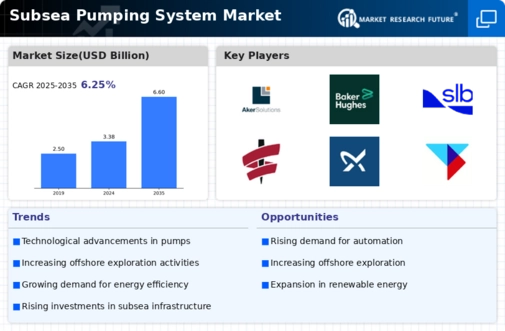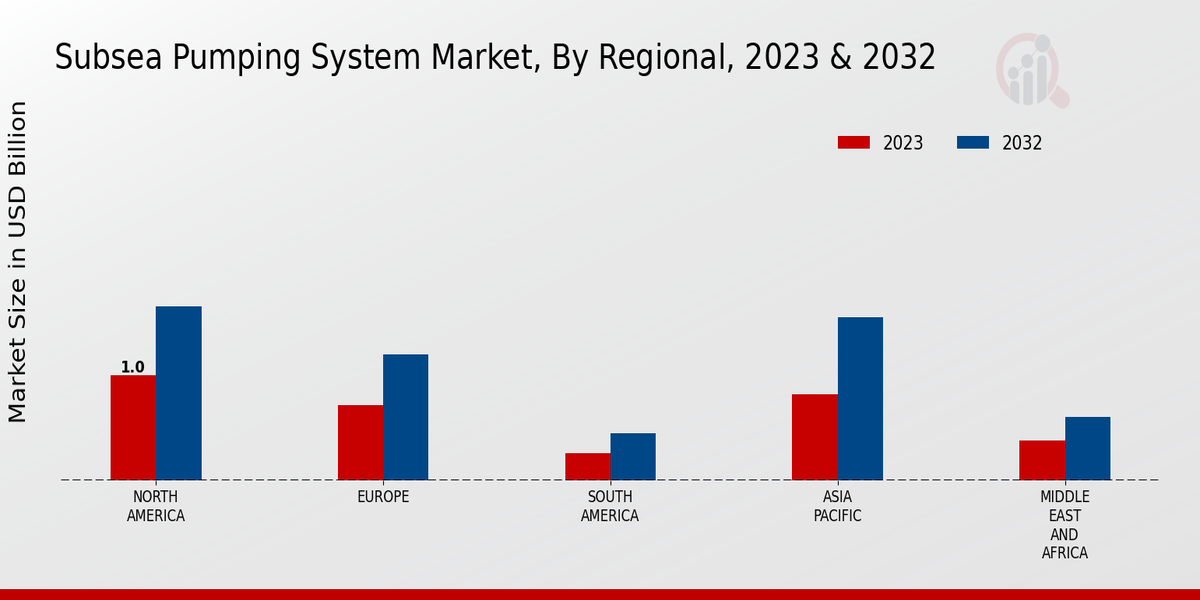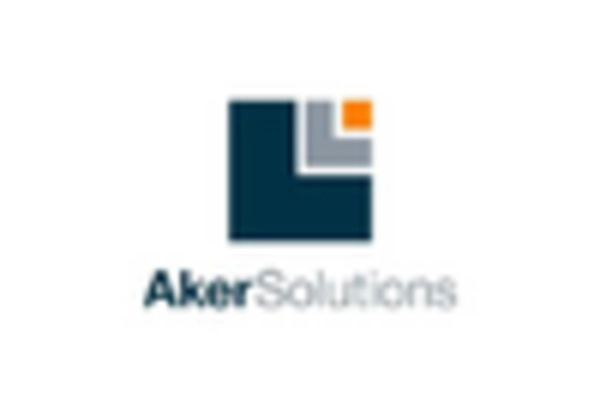Rising Energy Demand
The Subsea Pumping System Market is significantly influenced by the rising energy demand across various sectors. As countries strive to meet their energy needs, there is a growing emphasis on exploring and extracting oil and gas from deeper offshore reserves. This has led to an increased reliance on subsea pumping systems, which are essential for transporting hydrocarbons from the seabed to surface facilities. According to recent estimates, the demand for subsea pumping systems is expected to rise by 15% in the next few years, driven by the need for efficient extraction methods. This trend underscores the critical role that subsea pumping systems play in meeting global energy requirements.
Environmental Regulations
The Subsea Pumping System Market is also shaped by stringent environmental regulations aimed at minimizing the ecological impact of offshore drilling activities. Governments and regulatory bodies are increasingly mandating the use of advanced pumping systems that reduce emissions and prevent spills. This regulatory landscape is pushing companies to adopt more sustainable practices, which in turn drives the demand for innovative subsea pumping solutions. The market is likely to see a shift towards systems that not only comply with these regulations but also enhance operational efficiency. As a result, investments in environmentally friendly subsea technologies are expected to increase, reflecting a broader commitment to sustainability in the energy sector.
Technological Innovations
The Subsea Pumping System Market is experiencing a surge in technological innovations that enhance operational efficiency and reliability. Advanced materials and designs are being developed to withstand extreme underwater conditions, which is crucial for the longevity of subsea pumping systems. For instance, the integration of smart sensors and IoT technology allows for real-time monitoring and predictive maintenance, reducing downtime and operational costs. As a result, companies are increasingly investing in these advanced systems, with the market projected to grow at a compound annual growth rate of approximately 6% over the next five years. This trend indicates a strong demand for innovative solutions that can optimize subsea operations.
Increased Investment in Offshore Exploration
The Subsea Pumping System Market is benefiting from increased investment in offshore exploration projects. As oil and gas companies seek to tap into untapped reserves, there is a growing need for reliable subsea pumping systems that can facilitate extraction from challenging environments. Recent reports indicate that investment in offshore projects is projected to reach over 200 billion dollars in the next five years, with a significant portion allocated to subsea technologies. This influx of capital is likely to stimulate innovation and drive the development of more efficient pumping systems, thereby enhancing the overall market landscape.
Growing Demand for Enhanced Recovery Techniques
The Subsea Pumping System Market is witnessing a growing demand for enhanced oil recovery techniques, which are essential for maximizing output from existing fields. As conventional extraction methods become less effective, subsea pumping systems are increasingly employed to improve recovery rates. Technologies such as subsea boosting and water injection are gaining traction, as they allow for the efficient extraction of hydrocarbons from mature fields. The market for these enhanced recovery systems is expected to expand, with projections indicating a growth rate of around 7% annually. This trend highlights the critical role of subsea pumping systems in optimizing resource extraction and ensuring the sustainability of offshore operations.


















Leave a Comment